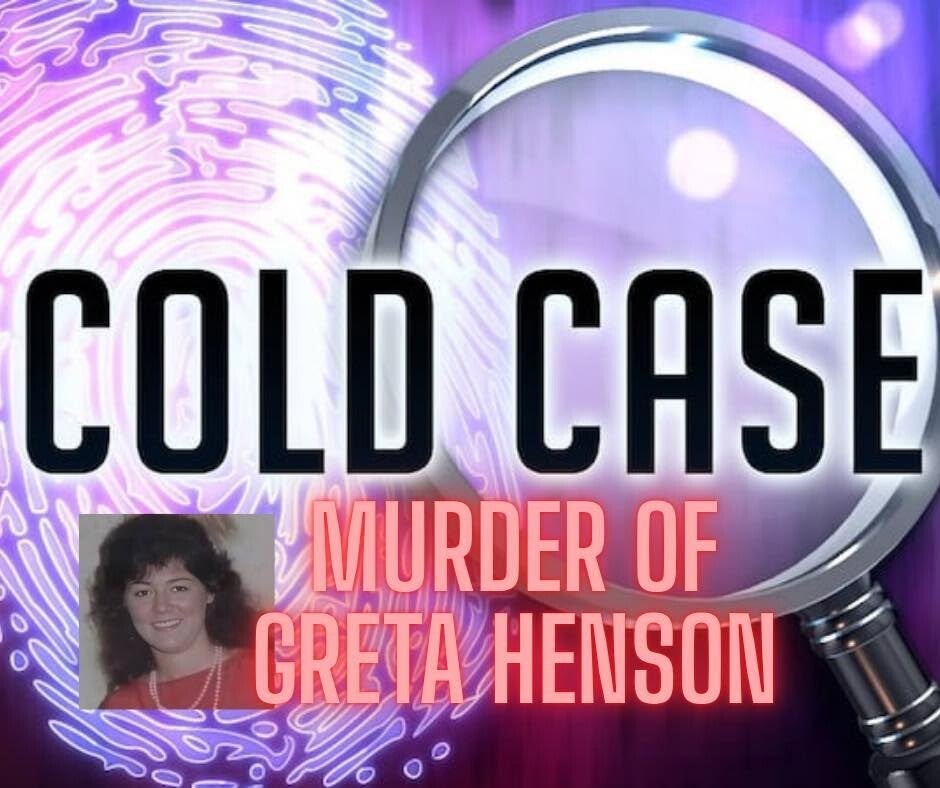
Baby Elena’s Case: From Sexual Assault Claims to Quiet Charges
By: The The Source| Justin Howard
Middlesboro,Kentucky —In late July 2023, 17-month-old Elena Hembree was rushed to Middlesboro ARH Hospital in catastrophic condition, then flown to Knoxville where she later succumbed to her injuries. From the beginning, public statements framed her death as more than accidental: Middlesboro Police suggested Elena had suffered abuse that “could also be sexual assault.” The then-Commonwealth’s Attorney, Lisa Fugate, seized on that narrative at a community vigil, assuring voters she would pursue the harshest penalty possible: “If I can seek the death penalty, you better believe I will.” Headlines across the region echoed it—this was a case of infant sexual violence.
But the forensic evidence told a different story. Months later, state lab tests revealed no male DNA on or in Elena’s body. Her autopsy concluded the cause of death was “non-accidental blunt force trauma,” and noted no signs of genital injury or sexual violation. The medical examiner’s findings discredited the early narrative of rape.
Yet Fugate never publicly corrected the record before leaving office. No sexual abuse charges ever surfaced. Instead, the prosecution shifted focus—toward physical brutality. By May 2025, a Bell County grand jury indicted local resident Harvey Gollahan on one count of murder and three counts of first-degree criminal abuse, alleging he permitted Elena’s torture and cruel punishment while in his care. Elena’s mother, Erica Lawson, later pleaded guilty to murder. Nowhere in the indictments—against either defendant—is sexual assault ever mentioned.
That gap has not gone unnoticed. If the Commonwealth’s Attorney openly claimed a 17-month-old was sexually assaulted, why does the court record offer no support? Why was rape rhetoric publicly broadcast without evidentiary backing, only to be quietly dropped?
This is where the undercurrent of silence grows too loud to ignore. Mike Taylor, the current Commonwealth’s Attorney, has staunchly reframed the case post-Fugate:
• On Gollahan’s court appearance, Taylor acknowledged that “Gollahan’s testimony played a key role in the conviction” of Erica Lawson.
• He made it painfully clear: “It’s what we can prove, and from that standpoint, we got justice in this case.”
Taylor emphasizes that no more prosecutions are expected, and that the case will close with the convictions of Lawson and Gollahan.
Let that sink in: what was once a case of claimed sexual assault — amplified through a prosecutor’s dramatic death-penalty talk — has distilled down to blunt-force trauma and neglect. From Fugate’s fiery promise to Taylor’s measured prose, the prosecutor’s office has shifted from sensationalism to a cautious strategy—yet without ever explaining why.
The consequences sting. Fugate’s original rhetoric ignited public outrage and set expectations high. Taylor’s comments now offer a manager’s view of what is legally viable—silent on those early missteps. The public deserves clarity: was sexual abuse alleged in error? Was evidence lacking all along? Or was it an irresponsible overstatement?
These questions demand answers. Bell County residents deserve transparency from both the former and current Commonwealth’s Attorneys. Justice should not be shaped by what’s dramatic—but by what’s demonstrable. In Elena’s case, too little was proven. Until officials confront that discrepancy, the case remains shadowed by more questions than answers. This is why the community is pushing for a trial.
TWO ESCAPED BCFC PRISONERS ARRESTED ON SATURDAY, AUGUST 30 IN ANDERSON COUNTY TENNESSEE

BELL COUNTY—Two inmates, Billy Wayne Potter, 32, and Steven Lee Spencer, 22, escaped from the Bell County Forestry Camp late Monday night, August 25, 2025, at approximately 8:53 p.m.
Billy Wayne Potter is described as a white male, 6’0”, 239 pounds, with black hair and hazel eyes. His charges include fleeing or evading police, first offense; possession of a controlled substance, first degree – methamphetamine; bail jumping; possession of a controlled substance, first degree – second or greater offense; tampering with physical evidence; fleeing and evading police, first degree (SKY CT 24); and criminal mischief, first degree. He was last seen wearing khaki pants, a white short-sleeve T-shirt, a khaki baseball cap, and black boots.
Steven Lee Spencer is a white male, 5’7”, 132 pounds, with brown eyes and a recently shaved head. His charges include receiving stolen property over $10,000, theft by unlawful taking between $1,000 and $10,000, another count of receiving stolen property over $10,000, fleeing and evading police in a motor vehicle, wanton endangerment in the first degree, and criminal mischief in the first degree. He was last seen wearing a gray sweatshirt, gray sweatpants, white tennis shoes, and a toboggan.
Authorities emphasize that both men are considered low-level offenders and that their escape does not suggest an immediate threat to the public. Still, the event has caused unease throughout the community.
In response, Clairfield Elementary School canceled classes until further notice. “Our number one priority is keeping children safe,” said Principal Lisa Turner. “We believe it’s best to err on the side of caution until law enforcement has these men back in custody.”
Across the area, residents have heightened their vigilance. Many report locking doors, keeping lights on, and watching back roads more closely than usual. “It’s unsettling,” said local parent Angela Collins. “I know they’re supposed to be low-risk, but when you hear the words ‘escaped inmate,’ that’s all it takes to make you worry about your kids.”
Social media groups have been filled with warnings, updates, and thanks to law enforcement for their efforts. Officers have continued to remind the public not to approach the escapees, but to report any sightings directly. “We want the community’s eyes and ears, but not their interference,” one trooper noted. “Safety comes first.”
While fear is natural in uncertain moments, officials stress that the Bell County Forestry Camp houses minimum-security inmates, many of whom are involved in work and rehabilitation programs designed to ease their transition back into society. Neither man has a violent conviction, and no evidence suggests they are armed.
The search is ongoing, and Clairfield classes will resume once the all-clear is given. Until then, the community remains cautious but hopeful for a quick resolution. “We’ll get through this,” said longtime resident Harold Lawson. “This county looks out for each other, and we trust the police to handle their part.”
Though the escape has rattled nerves, the broader reality remains measured: two non-violent offenders on the run have disrupted routines, but calm vigilance—not panic—will see the community through until both men are back in custody.

What’s on the Ballot:
Federal Races
• U.S. Senate (Kentucky) – A hot race with Mitch McConnell stepping down.
• U.S. House (5th District) – Longtime incumbent Hal Rogers’ seat, which includes Bell County, is up.
State Races
• Kentucky House of Representatives – All 100 seats, including Bell County’s district.
• Kentucky Senate – Only even-numbered districts are on the ballot; Bell County’s district is not up this cycle.
Judicial Races
• Kentucky Supreme Court (District 3) – Nonpartisan justice contest.
• District Court Judges – Several local judicial seats on the ballot.
County Races
Bell County’s traditional slate of four-year partisan offices are all up for grabs:
• Judge/Executive
• Sheriff
• Jailer
• County Attorney
• Coroner
• Property Valuation Administrator (Tax Assessor)
• Circuit Court Clerk
• Constables
• Magistrates (all five districts)
City Elections
• Middlesboro – Mayor and at-large city council seats.
• Pineville – Mayor and city council seats.
• Any other incorporated towns will also elect local officials.
School Boards
• Bell County Board of Education (district seats staggered on ballot)
• Middlesboro Independent and Pineville Independent boards.
⸻
- When You Actually Vote
• Primary Election Day – Tuesday, May 19, 2026
• General Election Day – Tuesday, November 3, 2026
• Voter Registration Deadline – April 20, 2026
• Party Switch Deadline – December 31, 2025 (to vote in your new party’s primary)
• Candidate Filing Deadline – January 9, 2026
• Absentee Ballot Request Window – April 4 to May 5, 2026
• Mail Ballot Return Deadline – Must be received by 6:00 PM on May 19, 2026
Early Voting
• Excused Early Voting – May 6–8 & May 11–13, 2026
• No-Excuse Early Voting – May 14–16, 2026
• Election Day Poll Hours – 6:00 AM to 6:00
Middlesboro —Vigil Scheduled as Advocates Call Potential Plea Deal in Baby Elena Case “Unacceptable”
Bell County, KY—Discussion of a possible plea agreement between the Commonwealth and Harvey Gollahan—the man charged in connection with the death of 17-month-old Elena Hembree—has sparked outrage among community members and victims’ advocates, who say anything short of the maximum penalty would be a miscarriage of justice.
Gollahan is facing charges of murder, multiple counts of first-degree criminal abuse, and possession of a firearm by a convicted felon. He appeared virtually in Bell Circuit Court this week for a pre-trial conference before Circuit Judge Keith Nagle. Mike Taylor confirmed that prosecutors and the defense are in talks about a plea agreement that could resolve all pending charges.
For many in the community, the mere suggestion of such a deal is unacceptable. Critics argue that Gollahan’s alleged actions—being present for repeated abuse that prosecutors say led to Elena’s death—warrant nothing less than the harshest sentence available under Kentucky law.
“This child endured unthinkable violence,” one advocate said. “Reducing his punishment through a plea bargain sends the message that her life was negotiable. That’s wrong.”
Court records and prior testimony state that Elena was violently shaken on at least three occasions, with the abuse occurring inside Gollahan’s home and in his presence. The brutality of the case, combined with the victim’s age, has intensified public demands for full accountability.
Taylor also confirmed that Gollahan’s testimony played a key role in the conviction of his co-defendant, the child’s mother, Erica Lawson, who was also allegedly involved in the murder of her daughter.
“Had it not been for that, we wouldn’t have been able to get the conviction that we got,” Taylor said.
Lawson’s plea agreement included a clause requiring her to testify against Gollahan, which has caused significant confusion within the community.
Lawson pleaded guilty to murder earlier this year and is now serving a 20-year prison sentence.
While plea agreements are a common prosecutorial tool aimed at avoiding lengthy trials and ensuring convictions, critics say this is a case where the principle outweighs the pragmatism. “The justice system is supposed to protect the most vulnerable,” another advocate said. “If we won’t stand firm for a murdered baby, then what are we standing for?”
Attempts to contact Mike Taylor for comment on the plea discussions have gone unanswered.
In response to the growing frustration, the community will gather on Friday, August 16th at 6:30 pm, in the Middlesboro City Parking Lot for a special event to demonstrate their continued dedication to securing true justice for Elena. Organizers say the gathering will serve as a public reminder that her case will not be forgotten and that those responsible must be held fully accountable.
Advocates are urging residents from Bell County and beyond to attend, bring signs, wear in Elena’s honor, and stand united any plea deal that falls short of full justice. Organizers stress that a visible, vocal presence will send a powerful message to prosecutors: the people will not accept a compromise when it comes to the life of an innocent child.
Judge Nagle has not yet set a trial date, leaving the community bracing for the next development in a case that has already shaken Bell County to its core.

Frequent Spectrum Outages and High Bills Have Bell County Customers Fed Up
BY: THE SOURCE
Bell County, Kentucky – Spectrum dominates Bell County’s internet market, reaching nearly every household. But instead of that dominance translating to superior service, many residents say they’re stuck paying premium prices for unreliable internet—and with few other options, they feel trapped.
Plans are advertised at $30 to $70 a month depending on speed, with the company promoting speeds up to 1 Gbps. Yet many local customers report that, after taxes, fees, and expired promotional rates, their actual bills are significantly higher. And when service cuts out entirely, those higher bills sting even more.
In recent months, outages have hit large swaths of the county, including Middlesboro, causing disruptions to work, school, and daily communication. Fiber alternatives from competitors reach only a small portion of the county, DSL is slow, and fixed wireless is inconsistent. In rural areas, the only other option is satellite—often slower, more expensive, and far less reliable. The result is what many call a monopoly, with Spectrum holding all the cards and customers left with no real bargaining power.
Pamela Barnett, a Middlesboro resident, voiced what many are thinking:
“When you’re paying for high-speed internet, you expect it to be dependable. Lately, it feels like we’re paying more for less service. And what Spectrum advertises for new customers is not what most of us here are actually paying.”
We reached out to Spectrum’s regional representative multiple times over the past week for comment. Calls and messages went unanswered.
For years, Spectrum has marketed itself as the provider of fast, unlimited, contract-free internet in Bell County. But with repeated outages, bills higher than advertised, and no credible competition in most areas, customers are asking a simple question: why are they paying more and getting less?
How to Take Action
If you are frustrated with your Spectrum service, there are concrete steps you can take to be heard:
- Contact your city and county officials – Request they address internet competition and reliability.
- Bell County Judge-Executive’s Office – (606) 337-3076
- Middlesboro Mayor’s Office – (606) 248-5670
- Pineville Mayor’s Office – (606) 337-2958
- Kentucky Attorney General’s Consumer Protection Division – (502) 696-5389
- File a complaint with the FCC – www.fcc.gov/complaints
The more residents document and report outages, billing discrepancies, and poor customer service, the stronger the case for change.
Three juveniles are lifted after a high-speed collision with a vehicle

*CONTENT MAY BE GRAPHIC
Three Juveniles Airlifted After Serious Dirt Bike Collision in Middlesboro
MIDDLESBORO, Ky. — A dirt bike crash in Middlesboro left three juveniles critically injured Tuesday afternoon when their bike was struck by a vehicle near the intersection of 38th Street and Winchester Avenue. Reportedly, the driver of the vehicle was Chris Hall of Middlesboro.
According to Middlesboro Fire and EMS, the three juveniles were riding together on a single dirt bike when a passenger vehicle struck them at the intersection. Emergency crews quickly responded to the scene, providing on-site care before all three were airlifted to a regional trauma center due to the severity of their injuries.
The family has reported that after initially being flown to the University of Tennessee Medical Center, they were transferred to Children’s Hospital, where two will undergo surgery today. One of the dirt bike passengers is said to be at home but has multiple fractures in his vertebrae and is currently in a body brace.
The driver of the vehicle was reportedly not seriously injured and is expected to be physically unharmed.
The Middlesboro Police Department is leading the investigation. Details are under review.
This story is developing. The Source of the Tri-State will provide updates as more information becomes available.
*VIDEO SHOWS GRAPHIC FOOTAGE

A 30-year-old woman who tragically died in accident; AS AN ORGAN DONOR, SHE SAVED SIX LIVES
Lebanon, TENN—A fatal crash on Interstate 40 near Nashville on July 7th has claimed the life of Courtney Gibson, a 30-year-old mother from Bell County, Kentucky with her 18-month-old surviving the accident
LEBANON, TENN—The incident occurred on July 7 at approximately 4:00 PM, as Gibson was driving her 2017 red Toyota RAV4 eastbound on I-40. According to her fiancé, Dakota Pedigo, the crash occurred when another driver attempted to exit the interstate from the far-left lane to the 109 exit, crossing four lanes of traffic.
The merging vehicle struck the rear driver’s-side tire of Gibson’s SUV, causing it to spin out of control and collide with the concrete median barrier. The impact flipped the vehicle upside down, and it slid roughly 15 feet along the roadway.
Passersby traveling in the opposite direction witnessed the crash. Pedigo said several bystanders jumped the concrete barrier, shattered a window, and rescued the couple’s 18-month-old daughter from her car seat. Despite their efforts, they were unable to reach Gibson due to the condition of the vehicle.
She was transported by emergency responders to TriStar Summit Medical Center in Hermitage, Tennessee, where she was placed on life support. On July 10, she was pronounced deceased from the injuries sustained in the crash.
Pedigo shared that Gibson was a registered organ donor, and her wishes were honored following her passing. According to family and friends, her donations reportedly saved the lives of four to six individuals. Her final act, loved ones say, was a reflection of her nature—selfless, compassionate, and giving.
Gibson’s daughter, now in the care of family, was described by Pedigo as “her everything.” He emphasized that being a mother was the most important part of her life, and that she lived each day with her daughter’s happiness and well-being at the center of everything she did.
We contacted the Tennessee Highway Patrol dispatch, who confirmed the crash remains under investigation but were unable to provide details about the other driver. According to Pedigo, the driver was arrested at the scene for driving on a revoked license and improper lane change. We have contacted THP multiple times and are currently awaiting a response from a Public Relations Trooper for further details.
In a statement to The Source, Pedigo said:
“Courtney was a wonderful person who would help anybody. All she ever wanted to be was a mama. Our daughter was everything that she lived for. It truly amazes me that within a blink of an eye, due to another driver’s hurry and inconsideration, mine and my daughter’s life is changed forever.”
The investigation remains active. Additional information will be shared as it becomes available.
Courtney Gibson’s life ended in tragedy, but her final act on earth was to save the lives of six people through organ donation. Her legacy endures—through her daughter, through the loved ones who carry her memory, and through those whose lives were extended because of her selfless gift.
Six lives have been saved through Courtney’s heroic deed. Two peoplegot her lungs; two received her kidneys; another person was lucky to receive her liver and she certainly saved a life by donating her heart to someone who can continue to live. Thanks to Courtney.

HOUSING CRISIS
MIDDLESBORO, KY—Middlesboro’s rental woes are intensified by the steady demand from students at nearby Lincoln Memorial University. Many LMU students seek off-campus housing in Middlesboro due to limited residential availability on their own campus in Harrogate. Local real estate agents confirm that these students are a growing presence in the Middlesboro rental market, contributing to fierce competition for units and making it harder for permanent residents to find available or affordable housing.
Despite increasing demand, the city has extremely limited affordable and public housing infrastructure. Kentucky ranks near the bottom nationally in its provision of affordable housing, with only 43 affordable units available for every 100 extremely low-income households. Middlesboro’s Housing Authority manages roughly 462 aging public housing units across three complexes, in addition to about 450 Section 8 vouchers. That small stock must serve the entire Bell County region. There have been no significant public housing developments in recent decades, and waiting lists often span multiple years. Most new construction in the area does not qualify as affordable by federal or HUD standards.
Many struggling families are left with no viable options. The average household income in Bell County sits under $47,700, making even a $436 monthly rent a serious financial burden. Low-income renters are often forced to double up with other families, accept substandard housing conditions, or leave the area entirely.
“I have tried everything to find suitable housing that I can afford. It’s impossible,” said one Middlesboro mother of four. Her experience mirrors that of countless other residents facing rising rents, dwindling availability, and no relief in sight.
Local leaders and housing advocates are calling for immediate action. Proposals include expanding public housing, increasing the number of affordable units in new developments, and creating incentives for landlords to accept housing vouchers. Yet for now, Middlesboro remains a city where rental housing is affordable in theory — but unavailable in practice. The shortage of safe, stable, and affordable housing has become a crisis for working families and vulnerable residents alike.
Middlesboro Cold Case: The 1992 Slaying of Greta Henson
By: The Source
On the morning of January 7, 1992, the tight-knit Appalachian town of Middlesboro, Kentucky, awoke to a horrifying discovery that would haunt Bell County for decades. Inside her modest home, 24-year-old Greta Henson was found brutally murdered. Henson’s body was discovered by her parents, Josephine and Shirley Henson, who entered their daughter’s house to a scene of unimaginable violence. She had been bound and strangled, then shot point-blank in the back of the head multiple times. It was a crime that shattered the sense of security in this small coal-country community—and one that has never been solved.
Kentucky State Police combed the crime scene, piecing together chilling details. The murder weapon appeared to be Henson’s own .38-caliber revolver, which was found nearby. A family jewelry box was missing from the house, suggesting it was stolen by the killer. Strikingly, detectives reported no signs of forced entry, fueling the belief that Henson may have known her attacker. Despite these clues, early leads went nowhere and the case quickly went cold.
In the months and years following the crime, local and state authorities launched an extensive investigation. Detectives interviewed neighbors and processed forensic evidence. Henson’s home life drew scrutiny: she lived alone in a quiet neighborhood, with her parents nearby in Bell County. According to family and friends, she worked a steady job in town and had no known enemies. Her father, Shirley, was a retired coal miner and her mother, Josephine, a longtime community resident. Yet no breakthrough ever emerged. By early 1993, investigators had exhausted obvious suspects, and the trail of hard evidence had faded.
Over the next two decades, law enforcement periodically revisited the case as forensic technology advanced. In 2013, investigators resubmitted material from the crime scene for analysis, hoping modern tools could uncover new leads. In 2016, Kentucky State Police publicly announced they had uncovered new DNA evidence linked to Henson’s murder. A DNA profile was said to be definitive, but to date no match has been identified and no arrest has been made.
Law enforcement has kept the case in the public eye through periodic appeals. On anniversaries of the crime, state police have asked the community for help. In their most recent public statement, investigators reiterated that Henson had been shot five times in the head. Detectives encouraged anyone with information to come forward, emphasizing that even the smallest detail could prove crucial.
The victim herself—Greta Renee Henson—was remembered by friends and family as a quiet, hardworking young woman. At just 24, she had her whole life ahead of her. She was a devoted daughter who regularly visited her parents each morning and planned to build her future in Middlesboro. She was buried in a small Bell County cemetery, a grave now marked by a simple stone on Turner Church Road. Her parents, who survived her by many years, never stopped seeking justice. “We will never get over it,” her mother once said—a sentiment echoed by many in the town.
Middlesboro in the early 1990s was a city caught in transition. This Appalachian community of roughly 13,000 people—once a bustling coal town—was dealing with the economic aftershocks of industry decline. Families faced job losses and uncertainty, but violent crime remained rare. The murder of Greta Henson stood out not only for its brutality, but for its seeming senselessness. It remains one of the town’s most deeply felt tragedies.
The case drew comparisons to another unsolved crime: the 1990 murder of 21-year-old Jennifer Bailey, who was found strangled in nearby Pine Mountain State Park. Though law enforcement has stated there is no known link between the two killings, the timing and proximity led to widespread community speculation. Some feared a serial predator had targeted the area, but those fears never materialized into actionable leads.
Various theories have emerged over the years. The missing jewelry suggested a robbery, but the ferocity of the attack led others to believe the motive was personal. The lack of forced entry supported the idea that the killer was someone Henson knew and trusted. Rumors swirled about former boyfriends, acquaintances, and co-workers, yet police have never publicly identified a suspect. Online forums and amateur sleuths continue to trade theories, but law enforcement maintains that solid evidence remains elusive.
Despite the passage of time, the pain remains fresh for those closest to Greta Henson. Her mother, now elderly, has held out hope that justice will come. The Kentucky State Police continue to list the case as active, and investigators maintain that someone, somewhere, knows what happened. They urge the public to come forward—even anonymously—if they hold any knowledge that might shed light on the case.
As of 2025, more than three decades later, the murder of Greta Henson remains unsolved. Yet her story continues to resonate in the quiet hills of southeastern Kentucky. It is a reminder that justice delayed is not justice denied—and that even in the darkest cases, truth sometimes finds a way to the surface.

Middlesboro Cold Case: The 1992 Slaying of Greta Henson
By: The Source
On the morning of January 7, 1992, the tight-knit Appalachian town of Middlesboro, Kentucky, awoke to a horrifying discovery that would haunt Bell County for decades. Inside her modest home, 24-year-old Greta Henson was found brutally murdered. Henson’s body was discovered by her parents, Josephine and Shirley Henson, who entered their daughter’s house to a scene of unimaginable violence. She had been bound and strangled, then shot point-blank in the back of the head multiple times. It was a crime that shattered the sense of security in this small coal-country community—and one that has never been solved.
Kentucky State Police combed the crime scene, piecing together chilling details. The murder weapon appeared to be Henson’s own .38-caliber revolver, which was found nearby. A family jewelry box was missing from the house, suggesting it was stolen by the killer. Strikingly, detectives reported no signs of forced entry, fueling the belief that Henson may have known her attacker. Despite these clues, early leads went nowhere and the case quickly went cold.
In the months and years following the crime, local and state authorities launched an extensive investigation. Detectives interviewed neighbors and processed forensic evidence. Henson’s home life drew scrutiny: she lived alone in a quiet neighborhood, with her parents nearby in Bell County. According to family and friends, she worked a steady job in town and had no known enemies. Her father, Shirley, was a retired coal miner and her mother, Josephine, a longtime community resident. Yet no breakthrough ever emerged. By early 1993, investigators had exhausted obvious suspects, and the trail of hard evidence had faded.
Over the next two decades, law enforcement periodically revisited the case as forensic technology advanced. In 2013, investigators resubmitted material from the crime scene for analysis, hoping modern tools could uncover new leads. In 2016, Kentucky State Police publicly announced they had uncovered new DNA evidence linked to Henson’s murder. A DNA profile was said to be definitive, but to date no match has been identified and no arrest has been made.
Law enforcement has kept the case in the public eye through periodic appeals. On anniversaries of the crime, state police have asked the community for help. In their most recent public statement, investigators reiterated that Henson had been shot five times in the head. Detectives encouraged anyone with information to come forward, emphasizing that even the smallest detail could prove crucial.
The victim herself—Greta Renee Henson—was remembered by friends and family as a quiet, hardworking young woman. At just 24, she had her whole life ahead of her. She was a devoted daughter who regularly visited her parents each morning and planned to build her future in Middlesboro. She was buried in a small Bell County cemetery, a grave now marked by a simple stone on Turner Church Road. Her parents, who survived her by many years, never stopped seeking justice. “We will never get over it,” her mother once said—a sentiment echoed by many in the town.
Middlesboro in the early 1990s was a city caught in transition. This Appalachian community of roughly 13,000 people—once a bustling coal town—was dealing with the economic aftershocks of industry decline. Families faced job losses and uncertainty, but violent crime remained rare. The murder of Greta Henson stood out not only for its brutality, but for its seeming senselessness. It remains one of the town’s most deeply felt tragedies.
The case drew comparisons to another unsolved crime: the 1990 murder of 21-year-old Jennifer Bailey, who was found strangled in nearby Pine Mountain State Park. Though law enforcement has stated there is no known link between the two killings, the timing and proximity led to widespread community speculation. Some feared a serial predator had targeted the area, but those fears never materialized into actionable leads.
Various theories have emerged over the years. The missing jewelry suggested a robbery, but the ferocity of the attack led others to believe the motive was personal. The lack of forced entry supported the idea that the killer was someone Henson knew and trusted. Rumors swirled about former boyfriends, acquaintances, and co-workers, yet police have never publicly identified a suspect. Online forums and amateur sleuths continue to trade theories, but law enforcement maintains that solid evidence remains elusive.
Despite the passage of time, the pain remains fresh for those closest to Greta Henson. Her mother, now elderly, has held out hope that justice will come. The Kentucky State Police continue to list the case as active, and investigators maintain that someone, somewhere, knows what happened. They urge the public to come forward—even anonymously—if they hold any knowledge that might shed light on the case.
As of 2025, more than three decades later, the murder of Greta Henson remains unsolved. Yet her story continues to resonate in the quiet hills of southeastern Kentucky. It is a reminder that justice delayed is not justice denied—and that even in the darkest cases, truth sometimes finds a way to the surface.
“I rely on The Source for all my local news updates, they provide accurate and timely information that keeps me informed.” –PEGGY H.

